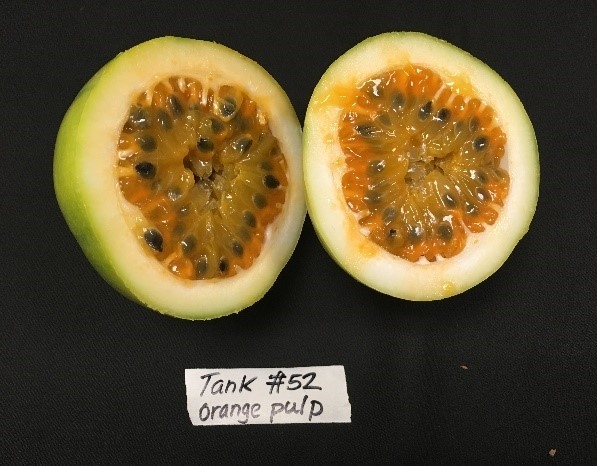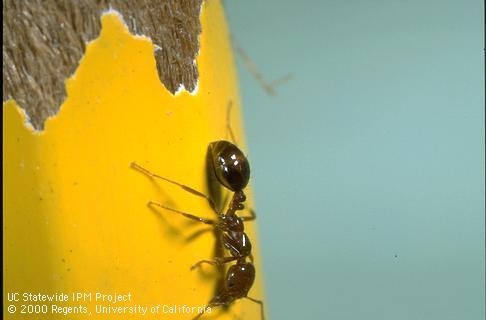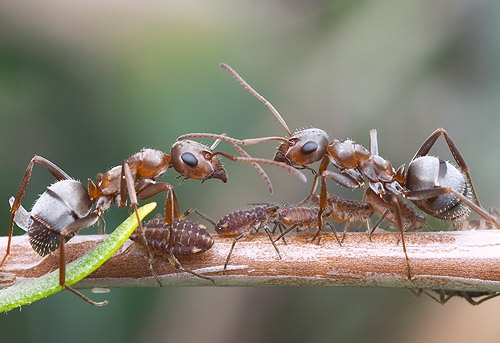- Author: Sonia Rios
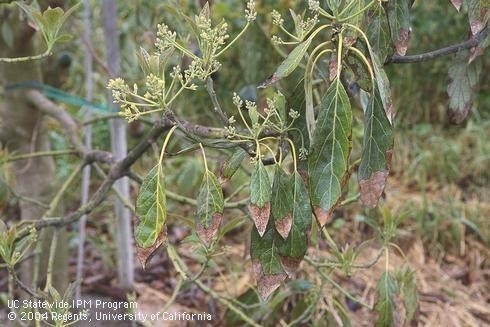
When: December 15, 2016
Where: USDA-ARS U.S. Salinity Laboratory - Loctated on UCR Campus 450 W. Big Springs Road, Riverside, CA 92507 https://campusmap.ucr.edu/
Time: Registration, light breakfast & coffee will be served at 8:00 AM, program from 8:30 – Noon
Cost: FREE Please register at : http://ucanr.edu/survey/survey.cfm?surveynumber=19550
Moderator: Sonia Rios, Subtropical Horticulture Farm Advisor, UCCE Riverside & San Diego Co.
Agenda:
8:30 AM – Welcome, Donald Suarez, U.S. Salinity Laboratory, Director
8:35 AM – “Management of avocado production in southern California” - Peggy Mauk Ph.D., Dir. of Agricultural 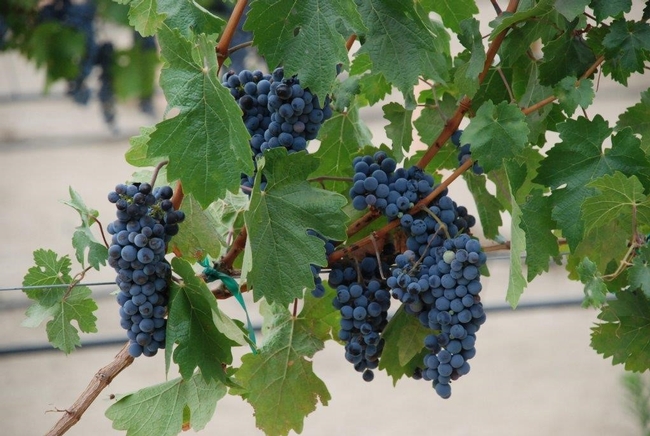
9:05 AM – “Avocado salinity management: Response of different rootstocks”- Donald Suarez Ph.D., USDA-ARS Salinity Laboratory Director
9:25 AM - “Grape Management in southern California - Carmen Gispert Ph. D. Area Viticulture Advisor, UCCE Riverside
9:55 AM – “Wine Grape production under saline conditions” - Donald Suarez Ph.D. USDA-ARS Salinity Laboratory Director.
10:10 AM - Break- light refreshments & snacks
10:30 – Noon - “Introducing Passion Fruit as a New Crop to Southern California- Cultural aspects and salinity effects” & Field Tour - Jorge Ferreira, Ph.D., Research Plant Physiologist, USDA-ARS, US Salinity Lab.
For more information, please Contact: Sonia Rios, UCCE Subtropical Farm Advisor: sirios@ucanr.edu
OR
Donald Suarez, USDA Salinity Laboratory Director: donald.suarez@ars.usda.gov, 951-369-4815
- Author: Sonia Rios
6 weekly classes and a Saturday Field Trip to the UC Cooperative Extension High Density Trial
2:00 – 4:00 pm, Wednesday afternoons located at the San Diego County Farm Bureau, 1670 E. Valley Parkway, Escondido CA 92027
Instructor: Gary Bender Ph,D., Farm Advisor Emeritus, UC Cooperative Extension
Classes Start April 27, 2016
Cost is $105.00 per person, which includes Dr. Bender's Avocado Production in California Books 1 & 2, ANR Publication IPM for Avocados, and The International Avocado Quality pocketbook
NEW! Schedule of Classes: (No refunds for classes missed)
- April 27, Introduction to Agriculture in San Diego County, History of Avocado Production in California
- May 4, Botany, Flowering, Varieties, Harvest Dates, Rootstocks
- May 11, Irrigation Systems, Irrigation Scheduling, Salinity Management
- May 18, Fertilization, Organic Production
- June 1, Canopy Management, Tree Spacing, disease and root rot control
- June 8, Avocado Insects and Mites, Polyphagour Shothole Borer and Fusarium Disease Speakers Mark Hoddel Ph.D., UCCE Entomology Specialist and Akif Eskalen Ph.D., UCCE Subtropical Plant Pathologist
- June 11, 9:00 AM, Saturday Field Trip to High Density Trial and a Commercial Grove, Valley Center CA Speaker Niamh Quinn UCCE Area Vertebrate Pest Advisor, demonstrating trap and bait station setting techniques.
To register follow click on the link http://ucanr.edu/survey/survey.cfm?surveynumber=17727
Please Contact Quang Tong for questions at qtong@ucanr.edu or 858-534-0947 for regeestration questions
Please contact Subtropical Horticulture Farm Advisor Sonia Rios for any other questions regarding the class or material being covered at sirios@ucanr.edu or 951-683-6491 ext. 224
- Author: Ben Faber
Gary Bender “was” a farm advisor in San Diego, who is still there but is now retired. He still knows his avocados and compiled his knowledge into a handbook that is online and available to all for immortality………….or as long as the internet survives. This concisely written text is full of practical information that even the most seasoned grower could probably learn from. And maybe those seasoned growers might have a lot to learn,
Find it at the UCCE San Diego website:
http://ucanr.edu/sites/alternativefruits/Avocados/Literature/
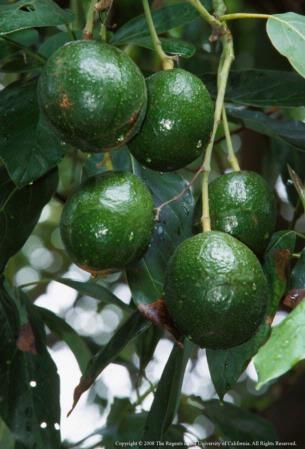
- Author: Ben Faber
Here are the top 10 blogs from Topics in Subtropics over the last 5 years. The two earliest and latest pertain to how you select products that will truly help you from amongst all those that are being promoted. Some of these have been around a long time, so that's why they are the most read. Do a Ctrl + click on the URL to read the post.
Title Author Date
A predatory mite

- Author: Sonia Rios
Many growers seem like they will never win the never ending battle with ants, they're everywhere! Conversely, ants travel through soil and help loosen it improving quality, allowing water, air, and nutrients to flow freely through it. They also decompose dead plant and animal matter and can even feed on other insects. However, ants sometimes chew crop twigs and tender bark, damage irrigation tubing, and can annoy and harm workers. You can find ants traveling alongside your trees, the ground, or irrigation lines and build their nests underground.

The southern fire ant (Figure 2.) is light reddish brown with a black abdomen. Active in the morning and early evening and do not trail. May swarm out of nests if disturbed and can inflict painful stings.
Native gray ants (Figure 3.) are gray and considerably larger than the other two species. They nest in topsoil or under rocks and debris and move in irregular patterns. In contrast to Argentine and fire ants, the native gray ant is solitary and its importance in disrupting biological control is often underestimated. Red imported fire ant is new to California and can make large, dome-shaped mounds. They feed on almost any plant or animal material.
Avocados & Citrus
Ants are pests primarily because they disrupt biological control of other pests, especially that of the Tamarixia radiata, which is a natural predator for the Asian Citrus Psyllid. Ants are also a big problem in young trees causing trunk damage as well as feed on honeydew excreted by various soft scales, mealybugs, cottony cushion scales, whiteflies, and aphids. As part of this relationship, they also protect these insects from their natural enemies, thus interrupting biological control of the honeydew-producing pests. In the process of keeping most natural enemies away, they also protect other pests, such as California red scale, that profit from the lack of natural enemies. Argentine and native gray ants are the most common ant species that aggressively protect pest insects. In addition, Argentine ants and red imported fire ants can plug up irrigation sprinklers. Red imported fire ants directly damage plants by chewing twigs and tender bark of newly planted trees; they also sting people working in the orchard and may cause allergic reactions and sometimes trips to the emergency room.
For more information on ants in avocados, please visit the UC IPM website:
http://www.ipm.ucdavis.edu/PMG/r8301311.html.
For more information on ants in citrus, please visit the UC IPM website:
http://www.ipm.ucdavis.edu/PMG/r107300211.html.
Management
Ant management requires diligent efforts and the combined use of mechanical, cultural, sanitation, and often chemical control methods. Ant populations peak in mid-summer through early fall, therefore the best time to bait is late winter to early spring when ant numbers are relatively low. Bait effectiveness varies with ant species, availability of alternative food, active ingredient, type of bait, and the time of year. To determine which bait to use, offer a small quantity of each of several baits and observe which is preferred by the ants.
For information on ants in general, please visit the UC IPM website:
http://www.ipm.ucdavis.edu/PMG/PESTNOTES/pn7411.html.


